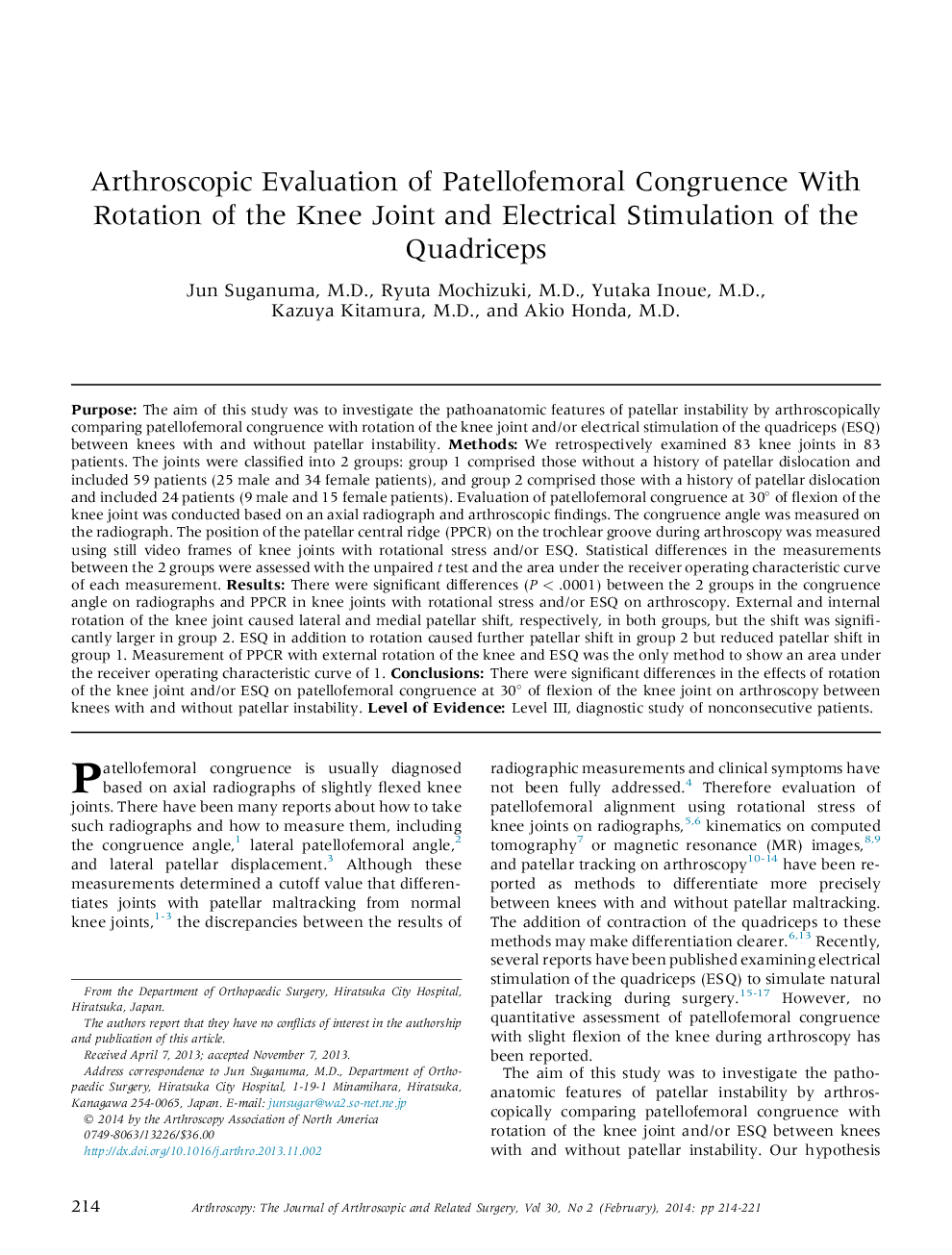| کد مقاله | کد نشریه | سال انتشار | مقاله انگلیسی | نسخه تمام متن |
|---|---|---|---|---|
| 4043083 | 1603500 | 2014 | 8 صفحه PDF | دانلود رایگان |
PurposeThe aim of this study was to investigate the pathoanatomic features of patellar instability by arthroscopically comparing patellofemoral congruence with rotation of the knee joint and/or electrical stimulation of the quadriceps (ESQ) between knees with and without patellar instability.MethodsWe retrospectively examined 83 knee joints in 83 patients. The joints were classified into 2 groups: group 1 comprised those without a history of patellar dislocation and included 59 patients (25 male and 34 female patients), and group 2 comprised those with a history of patellar dislocation and included 24 patients (9 male and 15 female patients). Evaluation of patellofemoral congruence at 30° of flexion of the knee joint was conducted based on an axial radiograph and arthroscopic findings. The congruence angle was measured on the radiograph. The position of the patellar central ridge (PPCR) on the trochlear groove during arthroscopy was measured using still video frames of knee joints with rotational stress and/or ESQ. Statistical differences in the measurements between the 2 groups were assessed with the unpaired t test and the area under the receiver operating characteristic curve of each measurement.ResultsThere were significant differences (P < .0001) between the 2 groups in the congruence angle on radiographs and PPCR in knee joints with rotational stress and/or ESQ on arthroscopy. External and internal rotation of the knee joint caused lateral and medial patellar shift, respectively, in both groups, but the shift was significantly larger in group 2. ESQ in addition to rotation caused further patellar shift in group 2 but reduced patellar shift in group 1. Measurement of PPCR with external rotation of the knee and ESQ was the only method to show an area under the receiver operating characteristic curve of 1.ConclusionsThere were significant differences in the effects of rotation of the knee joint and/or ESQ on patellofemoral congruence at 30° of flexion of the knee joint on arthroscopy between knees with and without patellar instability.Level of EvidenceLevel III, diagnostic study of nonconsecutive patients.
Journal: Arthroscopy: The Journal of Arthroscopic & Related Surgery - Volume 30, Issue 2, February 2014, Pages 214–221
